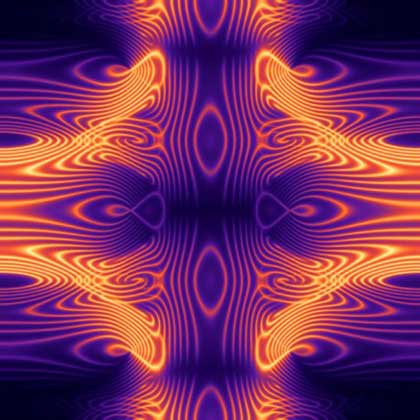Striped Superconductors

The psychedelic image above is a graphical summary of a theory describing striped superconductors.
Image courtesy of Florian Loder, University of Augsburg (2011)
Superconductors are materials that have no resistance to the flow of electricity. The first superconductor was discovered in 1911 when Heike Kamerlingh Onnes cooled Mercury down to 4 degrees Kelvin (-452F, -269C), the temperature of liquid helium. Later John Bardeen, Leon Cooper and John Schrieffer developed a theory of how superconductivity worked. Dubbed “BCS Theory” after the scientists’ last names, it described superconductivity for elements and simple alloys at temperatures close to absolute zero (0 Kelvin, −459.67F, −273.15C); however, BCS theory doesn’t quite explain how superconductivity works at higher temperatures and with more complicated materials. Such an all encompassing theory still eludes modern science and this is a major focus of physics research today. Striped superconductors or “Superstripes” are leading the way in high-temperature superconductivity research.











